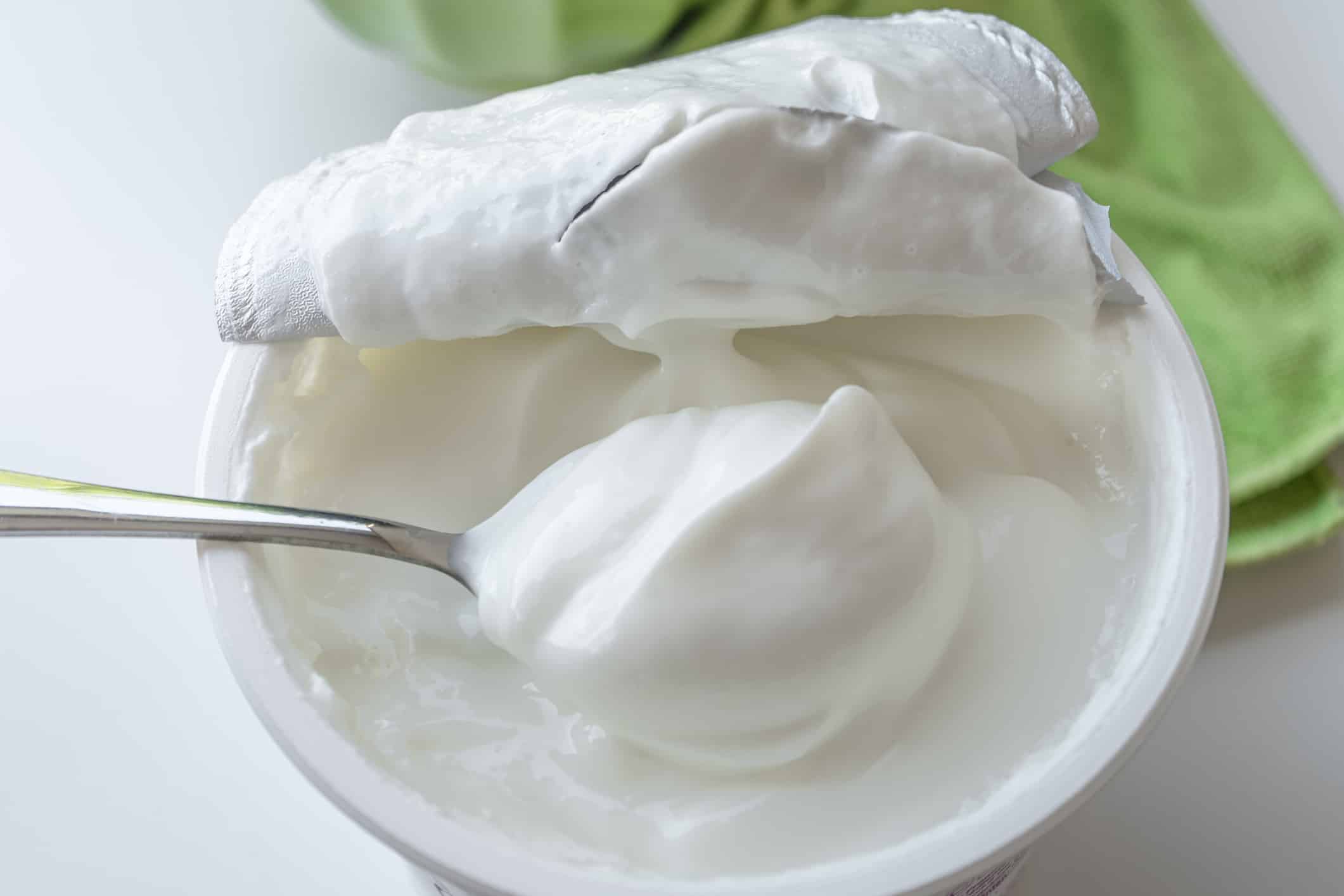Looking to add a creamy ingredient to a recipe and are stuck between Greek yogurt vs. sour cream? The two share some similarities, for instance, they're both products of milk and involve some kind of bacterial processing. Their differences are also rather significant to consider before using one for the other in certain recipes.
In this post, we'll take a look at the biggest differences between Greek yogurt and sour cream. We'll discuss how to use each in different recipes. And take a look at how the taste and consistency of each ingredient will affect certain meals. You'll learn some of the history and process of making Greek yogurt versus sour cream. At the end of this post, you'll be all the more prepared to choose one during your next meal prep.
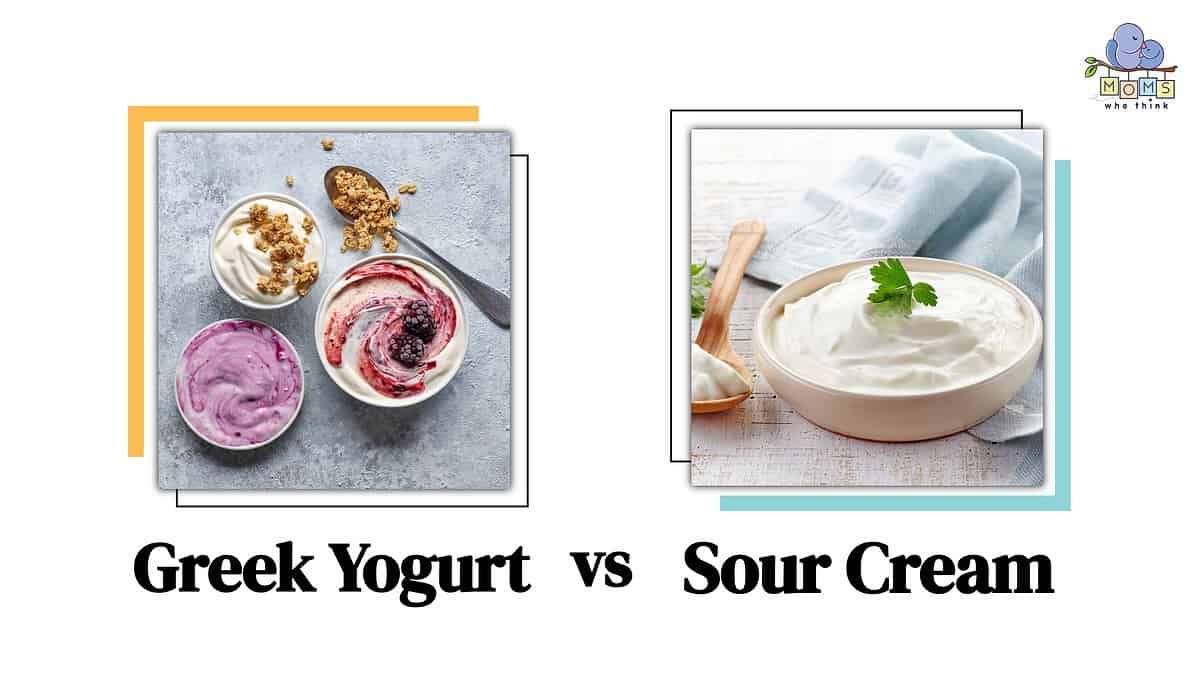
©
Greek Yogurt vs. Sour Cream: What is The Difference?
A major difference between Greek yogurt and sour cream is their production process. Sour cream is made by fermenting cream with bacteria, resulting in a thick and tangy product. On the other hand, Greek yogurt is made by fermenting milk and straining out the liquid whey, resulting in a creamy and protein-rich yogurt. When it comes to nutrition, Greek yogurt is a healthier option as it contains less fat and more protein than sour cream.
Nutritional Value in Sour Cream vs Greek Yogurt
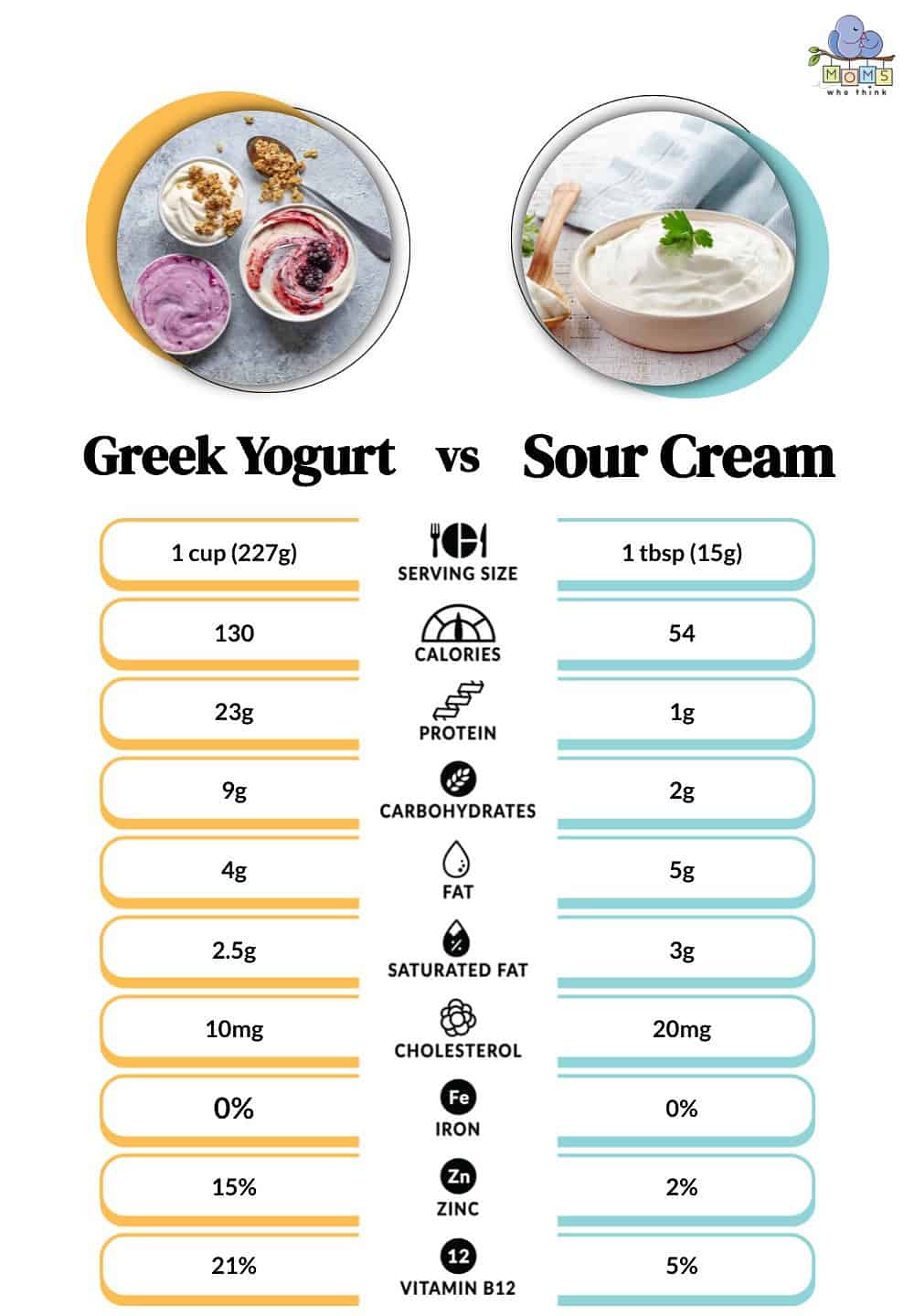
A nutrition comparison of sour cream and Greek yogurt
©
Greek yogurt brands can have varying calories depending on the amount of fat left in the final packaging. However, almost all Greek yogurts have significant amounts of protein. Meanwhile, sour cream typically has a higher ratio of fat relative to protein.
Greek yogurt's protein density is due to the fermentation process it undergoes after the yogurt cultures are added to the pasteurized dairy milk. The vitamin-mineral and nutrient breakdown of Greek yogurt are as follows: vitamin B12, riboflavin (B2), and selenium. calcium, phosphorus, zinc, pantothenic acid, vitamin A, potassium magnesium, choline, and copper. It often has fewer calories than regular yogurt. Keep in mind that the fat and sugar content depends on the added ingredients. There are lots of types of Greek yogurts that include fruits and other sweeteners. And you can always find plain variations that have a higher fat and protein content.
What is Greek Yogurt?
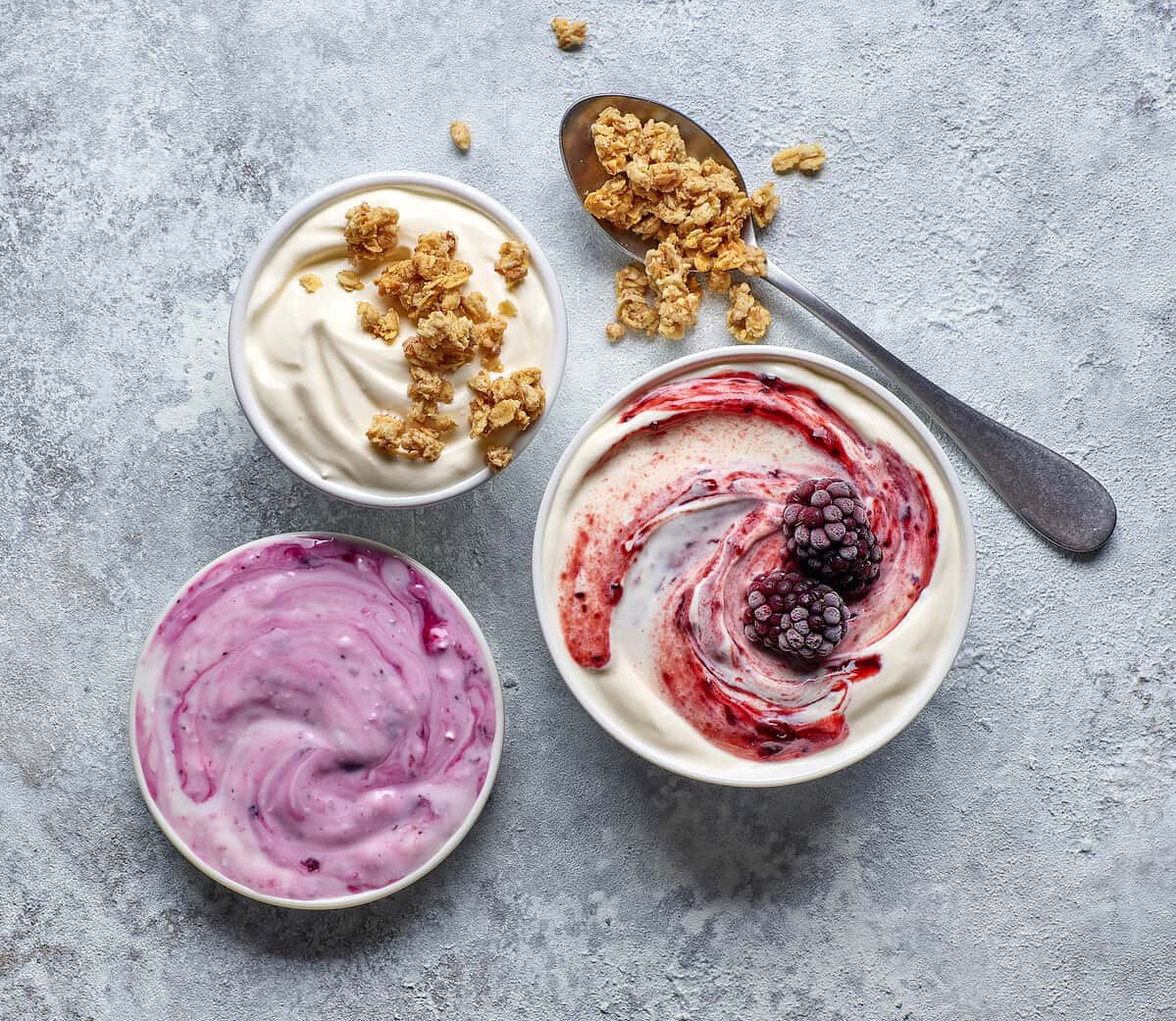
Greek yogurt can be dressed up as a sweet treat or added to other recipes for a creamy, thickening texture.
©iStock.com/Magone
Greek yogurt is beloved for its versatility. It is used in all kinds of recipes and dishes across numerous cultures. With a thick and tangy taste, Greek yogurt comes in many flavors and often with fruity or other sweet bases. Check out the supermarket for an array of brands. Bon Appétit recommends Fage Total 5% Greek Yogurt as the overall champion. Stonyfield Organic and Whole Foods Organic products are close behind in the high-quality Greek yogurt category.
History And Origins
According to Healthline, Greek yogurt has been a dietary staple since the ancient Greeks, which might explain the name. The name itself is likely derived from the Turkish word “yoğurmak” which translates to “knead” or the process of coagulation. Fage was the first company to make Greek yogurt popular in the U.S. and advertise its lower calorie content than classic, thinner fruit yogurts.
How Greek Yogurt is Made
Greek yogurt starts with the regular dairy milk gathering process. You take your cow or goat or lamb milk and put it through the steps of pasteurization. Pasteurization kills unwanted, unhealthy bacteria by heating the collected milk. Next, yogurt culture is added to the newly-pasteurized milk and the mixture is left to ferment and thicken. Once it is ready, this mixture is strained so that the liquid is removed. All that's left is the thick and creamy base of yogurt that will be packaged for sale (via Oikos Yogurt).
Popular Uses
Greek yogurt is an incredibly versatile ingredient. Add some fruits, nuts, honey, and other toppings. Enjoy it as a treat in the morning or late at night. Make it into a smoothie! You can add plain Greek yogurt to ingredients like dill and cucumber for a creamy dip or dressing. Adding spices and thorough mixing can result in a creamy marinade for several dinner dishes. And don't forget baking! Greek yogurt can be a moistening agent in lots of cakes and bread. Needless to say, there are a million ways to incorporate Greek yogurt into an exciting new recipe (via Whole Foods Market).
What is Sour Cream?
Sour cream is another product of bacterial fermentation. By adding lactic acid to dairy cream, the result is this tangy and tart condiment. Low-fat versions of sour cream are made with the use of skim milk. These products will also use thickening agents like food starch and gums. These are added to maintain a creamy consistency with less fat in the dairy milk starter (via Healthline).
History And Origin
Sour Cream's history is tied to traditional cooking styles in Eastern European countries. It has been around since at least the first half of the 20th century. It was originally produced by allowing dairy cream to sit until it naturally soured. Now the process is much more of a step-by-step and science-backed experience (via Reference.com).
How Sour Cream Is Made
Sour cream is made by adding lactic acid (also called Streptococcus lactis) to pasteurized dairy cream. The fermentation process happens in an environment of 72˚F so the bacteria can go wild. This temperature is maintained until the right flavor and level of texture are attained. For low-fat sour cream options, thickeners may be added such as food starches and gums (via California Dairy Press Room).
Nutritional Value
Nutritionally, there is some debate about how to best incorporate sour cream into a healthy diet. This is partly because sour cream is often used as either a sauce garnish. It can also be a thickener for soups and stews. Healthline breaks down the nutritional value of 2 tablespoons of sour cream as follows: 5.8 grams of total fat, 3 grams of saturated fat, 1.3 grams of carbs, and 0.7 grams of protein. There are also lots of nutrients like calcium, phosphorus, potassium, magnesium, vitamin A, vitamin B2, vitamin B12, and choline. While it is low in carbohydrates, it is high in saturated fats. The presence of saturated fats can result in weight gain if eaten frequently.
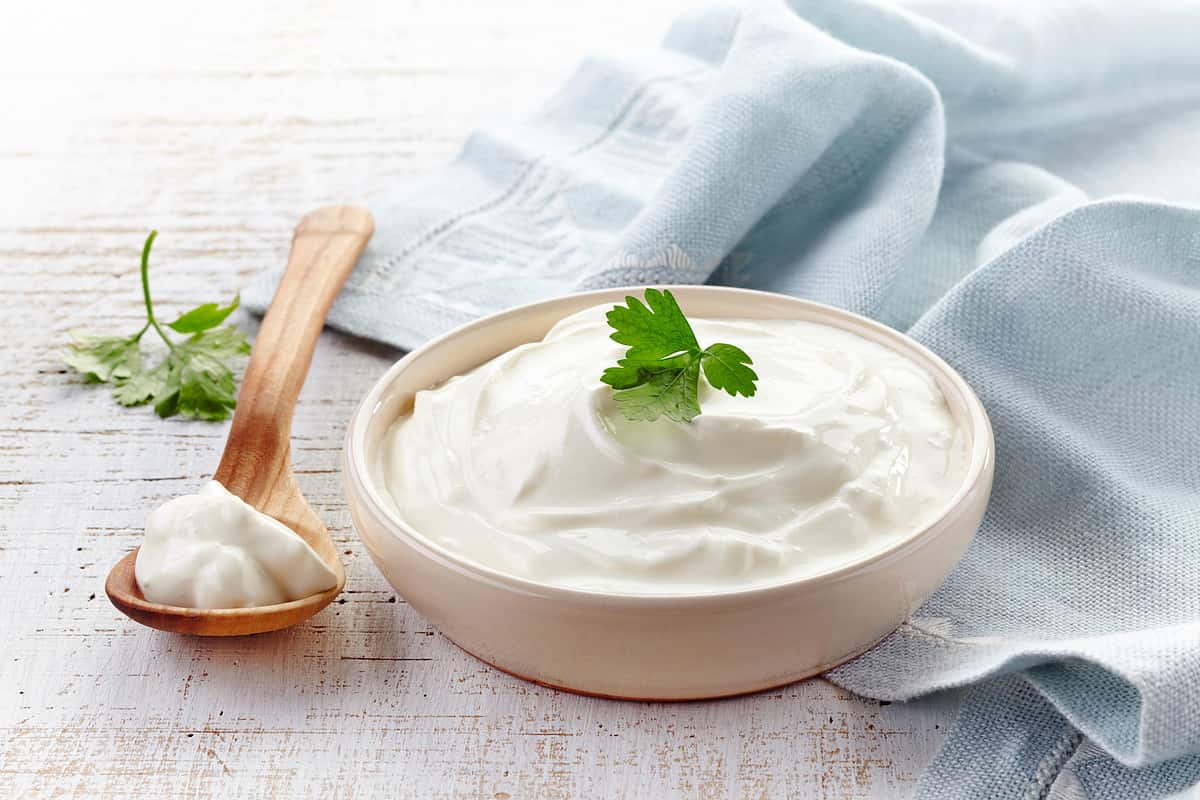
Sour cream, known for its tangy addition to most recipes, can be whipped into a great dipping sauce.
©iStock.com/Magone
Popular Uses
Historically, sour cream is used as a garnish for soups and stews as well as a thickening agent. It is great on baked potatoes, or when added to dips with ingredients like chives, dill, and onion salt. It can be a great addition to baked goods, adding a creamy texture and moistening quality to coffee cakes and other sweetbreads. Add it to pancakes for some tang to offset the sweet maple syrup or to soups and quiches or chili stews as a base.
Possible Alternatives To Greek Yogurt or Sour Cream
The obvious reason one might need to substitute these ingredients is due to a dairy allergy. Alternatively, maybe you don't have either of these ingredients on hand and simply need a close-second option. Coconut milk cream, soy derivatives, and cashew-based milk products are lactose-free and very well made. For dairy-based alternatives, cottage cheese, crème fraîche, and buttermilk are all options for reasonable recipe substitutions.
Are Greek Yogurt and Sour Cream The Same Thing?
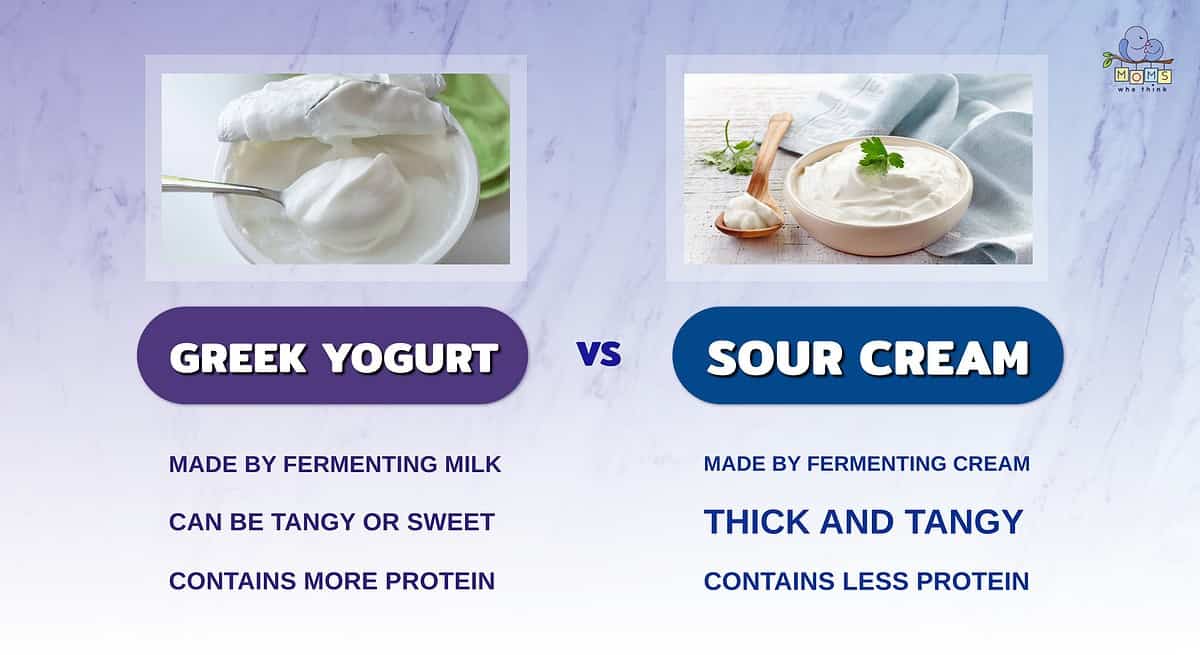
- Greek yogurt and sour cream are both made through fermentation, but the products that are fermented differ. Greek yogurt is fermented milk, while sour cream is fermented cream.
- Sour cream has a thick consistency and tangy taste. Greek yogurt can be tangy or sweet, depending on the amount of added sugar or other sweet ingredients added.
- Greek yogurt is well-known as a high-protein food. It's important to find Greek yogurt with no or low added sugar to fully reap the benefits of its high protein content.
In summary, Greek yogurt vs. sour cream has some key similarities, mainly in their origins. They are each useful for different aspects of adding creaminess and tang to a wide range of meals. Greek yogurt is a wonderful option if you're looking for an offset to a sweet treat or to thicken the base of a hearty stew. Meanwhile, sour cream can add a tart and creamy flavor to saltier dishes and is often used in smaller portions due to its high saturated fat content. Consider these characteristics when deciding which to use!
Looking for a fantastic recipe to try? Take a look at this savory and creamy ham fettuccine:
Print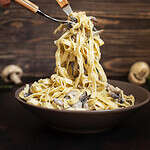
Savory and Creamy Ham Fettuccine
- Yield: 6 servings
Ingredients
12 ounces uncooked fettuccine
¾ pound fully cooked lean ham, cubed
2 Tablespoons olive oil
1 medium onion, finely chopped
1 cup fresh mushrooms, sliced
1 Tablespoon all-purpose flour
1 teaspoon dried rosemary, crushed
½ teaspoon salt
¼ teaspoon pepper
1¼ cups low fat evaporated milk
1 cup frozen peas, thawed
2 Tablespoons reduced-fat sour cream
Instructions
1. Cook fettuccine according to package directions.
2. Meanwhile, in a large frying pan, sauté ham in oil until lightly browned.
3. Remove with a slotted spoon and set aside.
4. Add onion to frying pan; sauté for 4 minutes.
5. Add mushrooms; sauté 3 minutes longer.
6. Stir in the flour, rosemary and pepper until blended.
7. Gradually add the evaporated milk. Bring to a boil; cook and stir for 2 minutes or until thickened.
8. Reduce heat; add peas and sour cream. Cook 2 minutes longer.
9. Drain fettuccine; stir into the mushroom mixture.
10. Add ham; heat through.
Nutrition
- Serving Size: 1⅓ cups
- Calories: 334
- Sodium: 876mg
- Fat: 8g
- Saturated Fat: 1g
- Carbohydrates: 46g
- Fiber: 3g
- Protein: 21g
- Cholesterol: 29mg
The image featured at the top of this post is ©iStock.com/Miki1988
